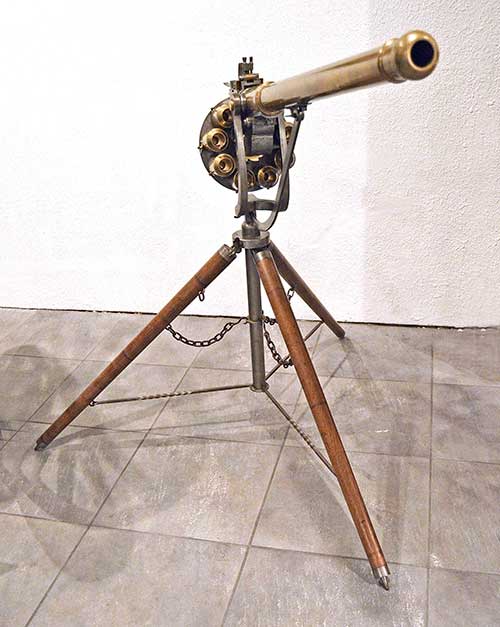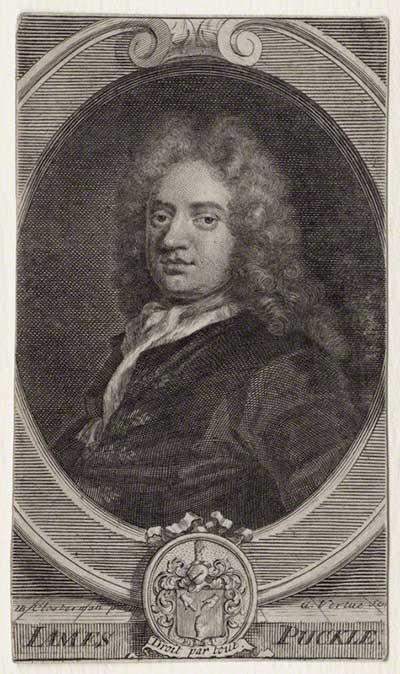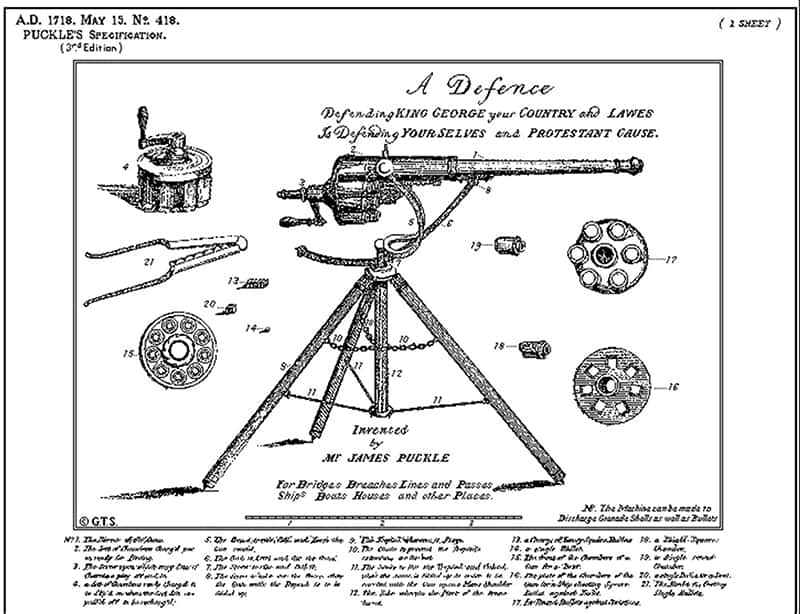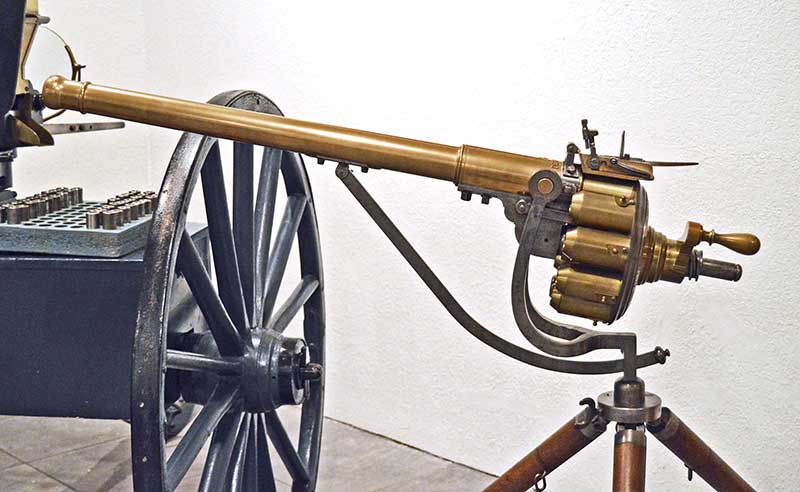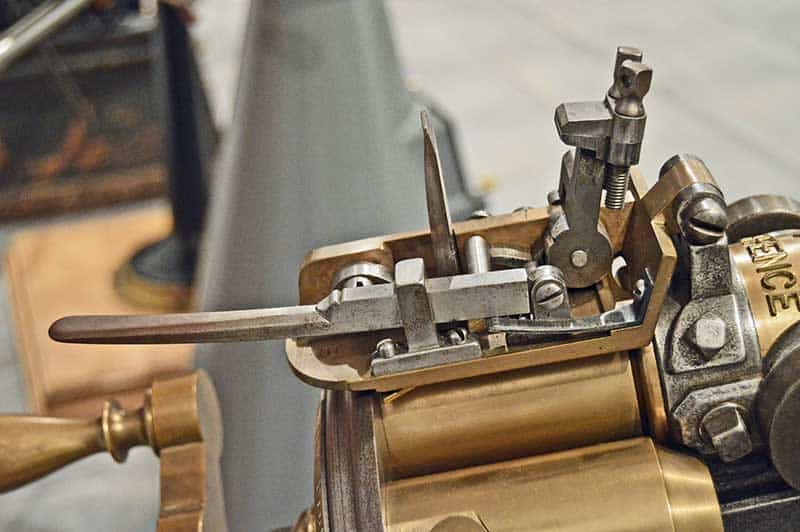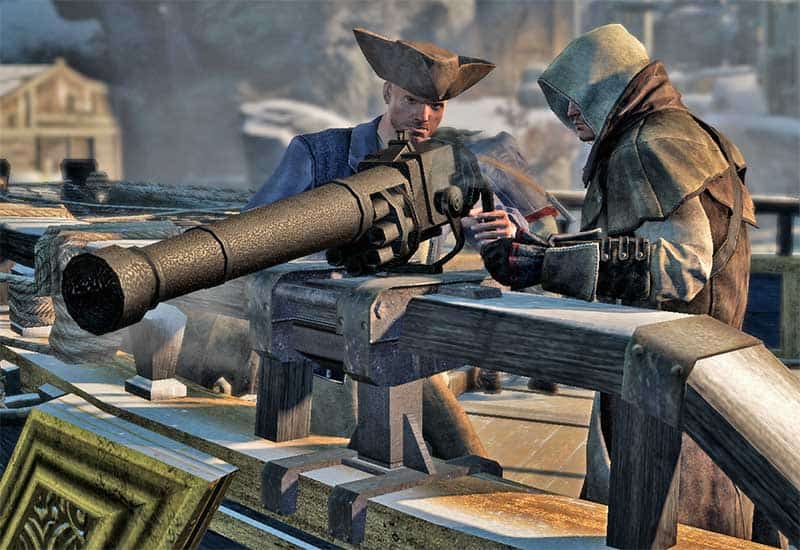Wonder Gun That Never Was
Three hundred and one years ago, an Englishman named James Puckle patented his “Defense” gun. It was an extraordinary, rapid-fire, tripod-mounted, big-bore, flintlock long gun using a single fixed-barrel and a revolving magazine (charger) that could be readily removed and exchanged for a loaded one.
It was too heavy for a single man to carry, but one man could empty its nine-round magazine in one minute. This was at a time when well-trained soldiers were expected to load and fire three to five shots a minute with their muskets. By comparison, Puckle’s design offered a tremendous amount of firepower. It was heavy firepower, too — really, a small cannon — intended to fire round or square projectiles between 1″ and 1 1/4″ in diameter.
Puckle’s 1718 patent specified the round bullets were for use against Christian enemies and the square bullets were meant only for Muslim Turkish adversaries, whereby the grievous wounds inflicted would, “convince the Turks of the benefits of Christian civilization.”
During the weapon’s single known public demonstration in 1722, supposedly held during a driving rainstorm, the Defense gun fired 63 shots in seven minutes which included several magazine changes. Many a battle in this era was called off due to rain’s irritating way of rendering gunpowder useless.
Failure To Launch
You would think a weapon of this sort would have changed warfare, but there’s no recorded evidence of it ever firing a shot in anger. In fact, after a military demonstration of the prototype in 1718, neither the British Army nor Navy took enough interest to purchase any, reportedly due to its “clumsy and undependable flintlock ignition” and other, unspecified, mechanical problems. Since virtually all military weapons of this era, and the next century for that matter, were flintlocks, one has to wonder exactly what they meant by “clumsy and undependable.”
I suspect an underwhelming military demonstration due to problems with the iron prototype gun was to blame. The prototype was described as crude compared to the brass production guns that followed. Having examined a partially original, reconstructed Puckle Defense gun at the Institute of Military Technology collection in Titusville, Fla., (instmiltech.com), there’s nothing clumsy or “undependable” about it. If anything, it’s more robust and reliable than any infantryman’s musket.
Aside from the prototype, only two of Puckle’s Defense guns were known to have been built, with both sold to the wealthy 2nd Duke of Montagu, John Montagu. The English King had granted Montagu the West Indies islands of Saint Lucia and Saint Vincent. The fact the French controlled both islands made Montagu’s title problematic, so he assembled a private invasion force in 1722 to seize them. The effort failed, but Montagu got his Defense guns back, both of which are still held by his ancestral estate.
The Details
In its time, the Defense Gun was also referred to as the “Machine Gun of Puckle’s” but it is not a machine gun by the modern definition since it’s almost entirely manually operated — indexed, cocked and fired — and can only fire once for each press of the trigger. It didn’t represent any ground-breaking mechanical genius, but it was a complex piece of machinery by early 18th century standards when all machines, great and small, were essentially hand built. As a result, it had to be expensive and probably prohibitively so. A high price tag and Puckle’s death in 1724 might have sealed its fate as footnote in the history of repeating arms.
Based on the reconstructed piece I examined, I think it could have been used to devastating effect on land and sea. It was originally conceived as a ship-mounted gun to deal with the small, fast and nimble ships favored by Turkish pirates. Though it looks barrel heavy, the mount is well designed to balance the gun and allow it to track targets and adjust fire as easily as a single-shot swivel gun. It was also light enough it could be stored below deck and quickly mounted on whatever rail was near where the threat presented itself. Its brass construction was resistant to salt corrosion and rust.
The magazines, including the crank used to mount it and dismount it, as well as change firing chambers, was fairly heavy, but could be mounted or dismounted by one man with four full turns of the crank in as many seconds. It required less than a full turn to withdraw the magazine’s tapered chamber mouths from the barrel breech enough to hand rotate the magazine to another chamber. A ratchet prevented the magazine from accidently being turned backward, but it could be over-advanced and each chamber had to be held in alignment while the crank was spun closed.
The hammer had to be manually cocked and the trigger lever depressed for each shot, but the movable plate they were mounted to automatically pushed back the protective priming powder cover on the chamber being indexed for firing.
Conclusion
Puckle’s gun required a bit of finesse and dexterity to use, but it was a faster shooter, by far safer and potentially much more accurate than the inexpensive, cast iron, removable breech, swivel guns that had changed little since medieval times. The latter used removable, mug-shaped breech blocks held in the chamber against combustion pressure with a hammered-in wedge.
Puckle’s choice of caliber was well balanced between anti-ship and anti-personnel use and he conceived of a multi-musket-ball, canister-shot type loading that would doubtless have been devastating at close range.
As history would have it, this wonder weapon never was, and it slipped quietly into obscurity only to be digitally revived in our times as one of the more interesting, and powerful, weapons in the “Assassin’s Creed” video game arsenal. What might have been if this remarkable weapon had truly been adopted and used.

Get More Revolver Content Every Week!
Sign up for the Wheelgun Wednesday newsletter here:
